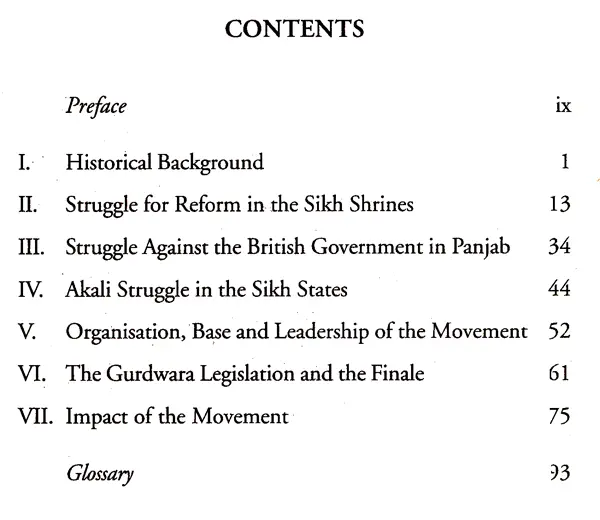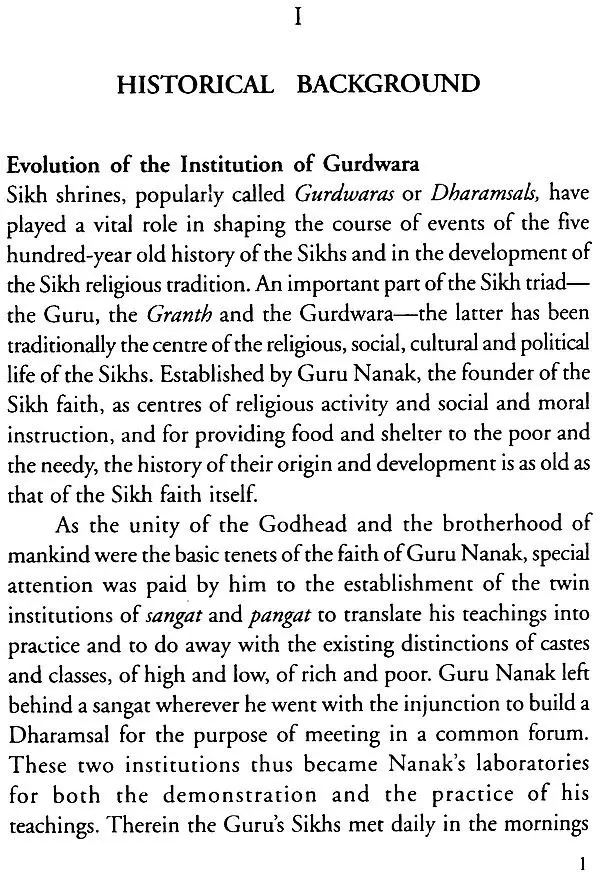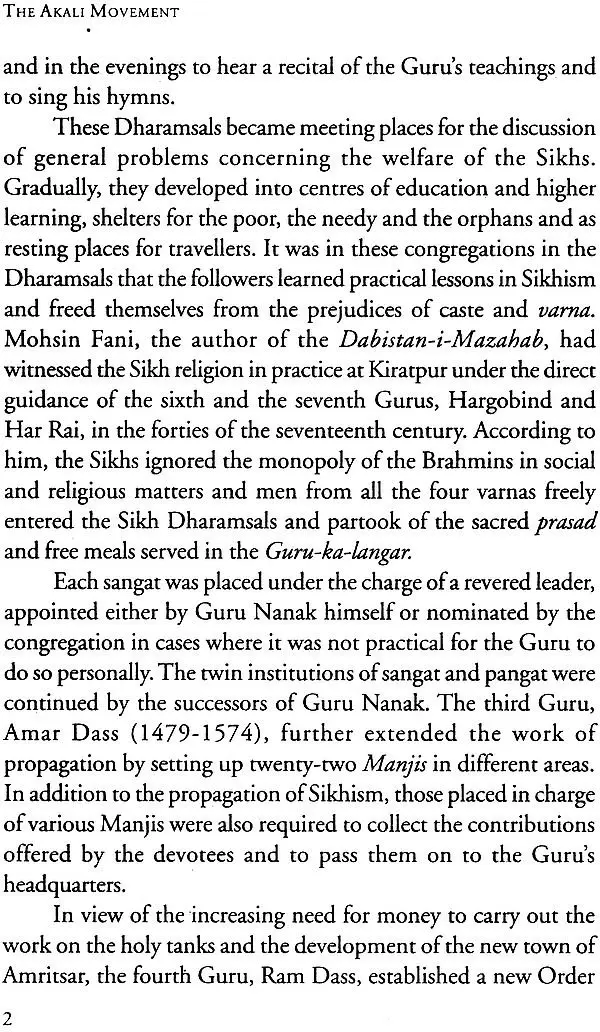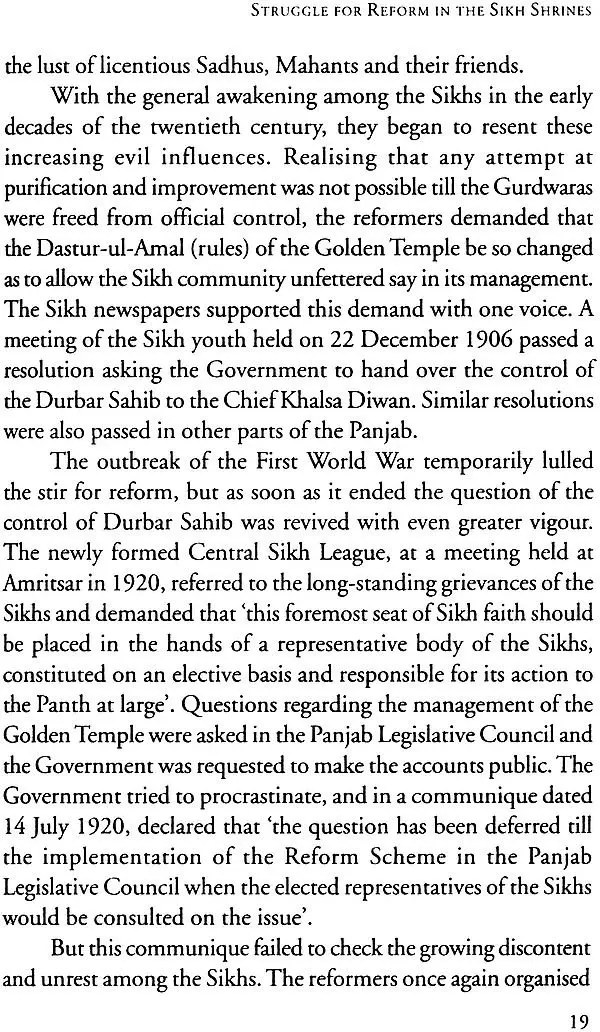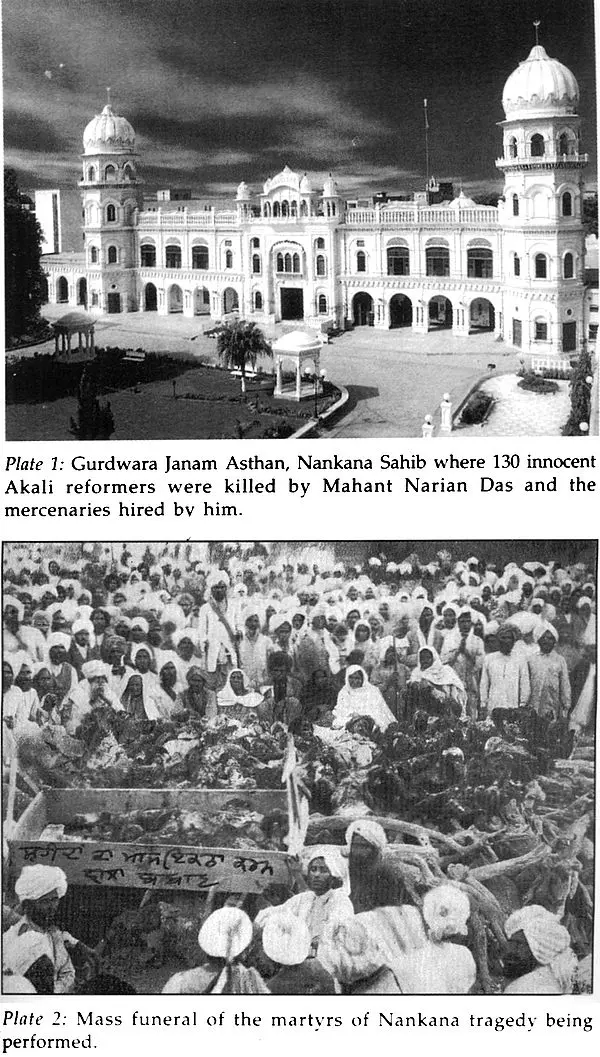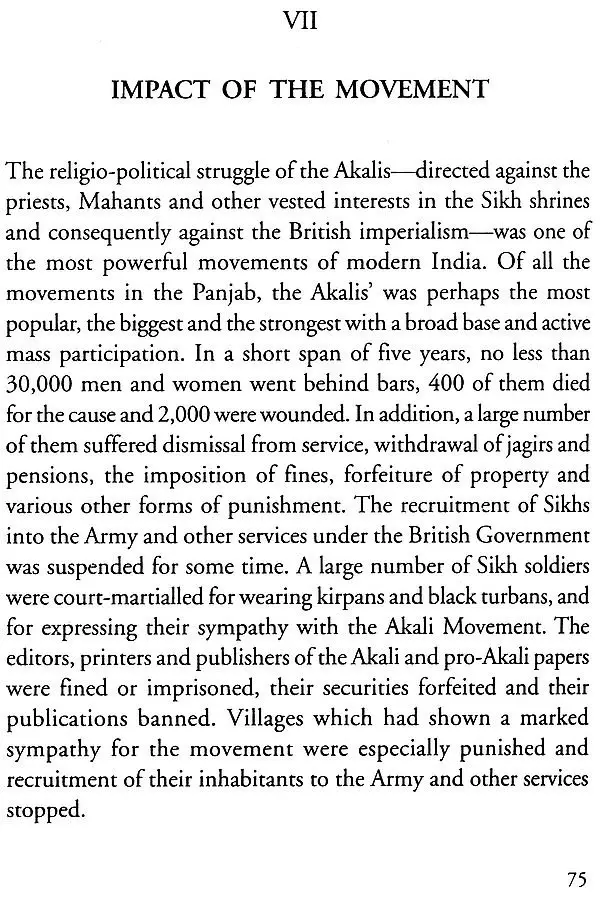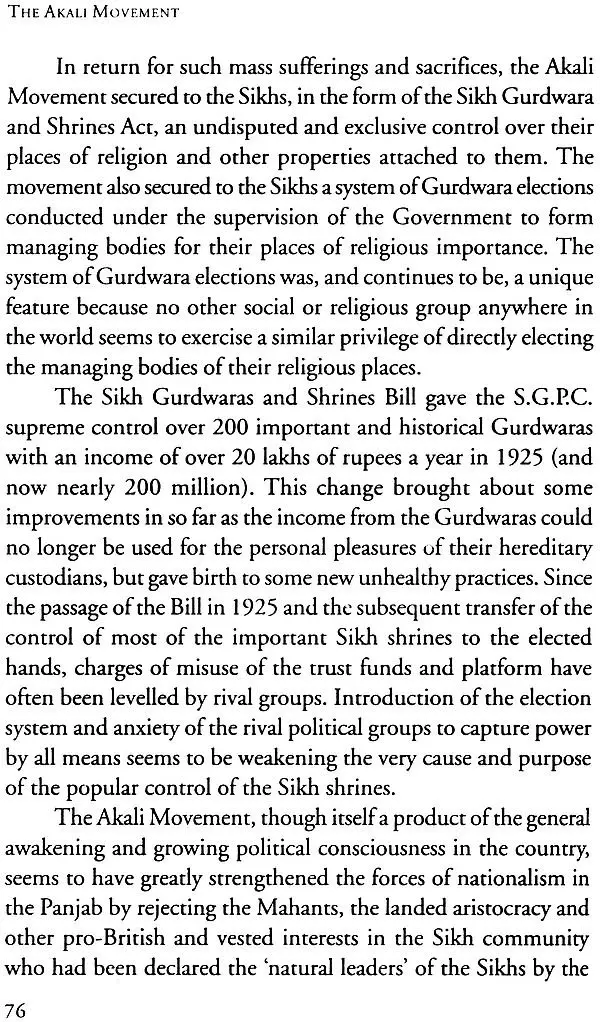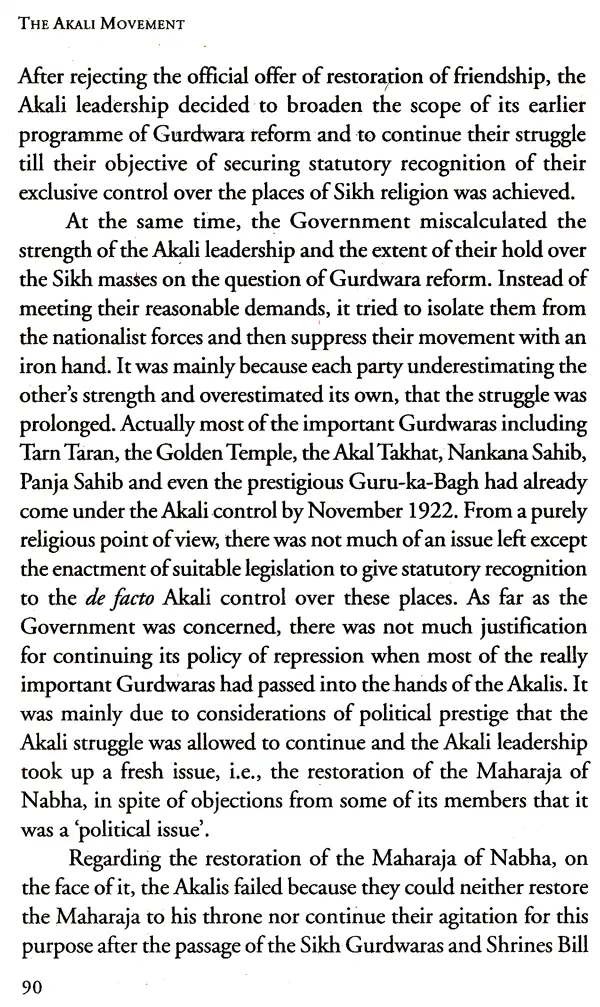
The Akali Movement
Book Specification
| Item Code: | UAF234 |
| Author: | Mohinder Singh |
| Publisher: | National Book Trust, India |
| Language: | English |
| Edition: | 2008 |
| ISBN: | 9788123752327 |
| Pages: | 94 (8 Black and White Illustrations) |
| Cover: | HARDCOVER |
| Other Details | 9.00 X 5.50 inch |
| Weight | 270 gm |
Book Description
The Akali Movement was the first successful demonstration of passive resistance organized by the Sikhs to dislodge the Mahants, priests and other vested interests from the Sikh shrines. It was in the wake of the Akali Movement that the sturdy Sikh peasantry of Panjab came out in the open against the British rule by initiating a frontal attack on the bureaucracy in the province which was working hand-in-glove with the vested interests. An interesting feature is that the Sikhs, who joined National Movement in the course of the Akali struggle and the Non-cooperation, then launched by Mahatma Gandhi, courted arrests in a strength equal to that of the Congress and the Khilafat volunteers put together. Then again, the Akali continued their non-violent struggle even after suspension in 1922 of the Non-cooperation Movement until they finally achieved their goal. The triumphant march of the Akali Jathas and their victory in the Key’s Affair was hailed by Mahatma Gandhi as the “First decisive victory of the forces of nationalism”. The present work is a comprehensive account of the five-year (1920-25) Sikh struggle. Based on fresh evidence gathered from the private papers of the contemporary British officials and the national leaders and hitherto untapped sources in India and the United Kingdom, this book throws new light on many significant issues.
Dr. Mohinder Singh taught history at S.G.T.B. Khalsa College, University of Delhi and History Department of the Punjabi University, Patiala. Before joining as the Director of the National Institute of Panjab Studies, New Delhi, Dr. Singh served as the Director of Guru Nanak Foundation. He was awarded fellowship by the Indian Council of Historical Research to carry his research forward in the United Kingdom on the Akali Movement, which subsequently earned him his Doctorate. Author of several standard works on Sikh history and religion, Dr. Singh sits on the Advisory Boards of several national and international organizations. Presently Dr. Singh is serving as a Member, National Commission for Religious & Linguistic Minorities, Government of India.
A revised version of the author’s doctoral thesis on the subject, this work was first published by Macmillan in NYS. Having been sold our in the very first year of its publication, the book remained out of print all these years, While dramatic developments have taken place in the field of Akali politics over the years, the Endings contained in this work still remain relevant and hence, die need for a popular abridged edition being published by the National Book Trust, India.
The book tries to explain the essentially non-violent nature of the Akali Movement. It shows how the Akali leaders in die past succeeded in channelising the popular religious upsurge during the Movement {1920-25} into a powerful instrument for India’s struggle For Freedom and brought the Sikh community into die mainstream of Indian nationalism. Three distinct Features of: the past struggle made it more effective than its later manifestations in the form of struggle for Panjabi Suba and more recent Akali agitation (1978-B4). The first was that the Akali leadership realised the value of press and public opinion. They not only started an English daily, The Hindustan Times, in addition to two vernacular papers, Akali [Urdu
In die present work, an attempt has been made to re-assess and re-evaluate the role of tl1e Akali Movement on the basis of fresh evidence Found in official records, private and Family papers and the once-proscribed literature now available in India and the United Kingdom. Both die official as well as the Akali sources on the subject have been studied. In the event of conflicting reports, misrepresentations, exaggerations and, in some cases, deliberate suppression of Facts in the official accounts as well as popular pamphlet literature on the subject, an effort has been made to verify the Facts and figures by comparing these with additional and independent evidence.
The author owes a deep debt of gratitude to the National Archives of India, the Nehru Memorial Museum and Library, New Delhi; die Punjab State Archives, the Punjabi University Library Patiala; the Sikh History Research Department, Khalsa College and Sikh Reference Library, Amritsar; the India Office Library, the British Museum, die School of Oriental and African Studies, University of London, London; the Bodleian Library, Oxford; the South Asia Centre, Cambridge, and to Sir George Dunnett, Mrs. J.B. Shearer and Mr. G.H.Emerson for providing access to their valuable collections.
I also wish to record my gratitude to my teachers DLG:-1nda Singh and Prof Bipan Chandra For their guidance and affection.
**Contents and Sample Pages**

